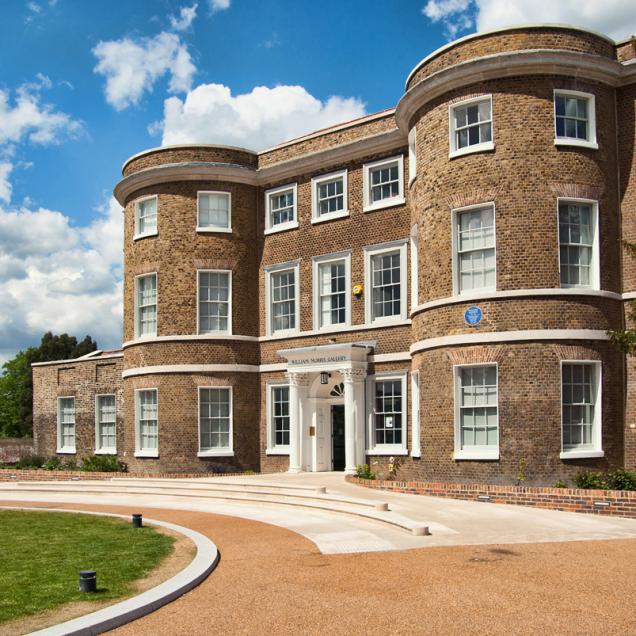

William Morris Gallery re-opening, Lloyd Park, London, review
The re-opened William Morris Gallery in Lloyd Park is full of charm and impressive history, capturing the life of the visionary polymath, writes Alastair Sooke.
When William Morris died aged 62 in 1896, his doctor quickly divined the cause of death: “The disease is simply being William Morris, and having done more work than most 10 men.” The doctor was hardly joking. During the course of his life, Morris distinguished himself as a poet, painter, designer, craftsman and social reformer. Making sense of the personality, achievements and legacy of such a visionary polymath is a complicated task. Yet that is what the new-look William Morris Gallery, which reopens this week following a year-long £5 million refurbishment, manages to do.
The gallery occupies a magnificent Grade II-listed Georgian villa, with a front boasting full-height semicircular bays and a white-painted timber porch with Corinthian columns. Situated in Lloyd Park in Walthamstow in northeast London, like a beacon of beauty amid the local asphalt-benighted urban sprawl, the three-storey building was home to the Morris family between 1848 and 1856, when William was at Marlborough College and then Oxford University, where he met his lifelong friend and collaborator, the painter Edward Burne-Jones, as well as Jane Burden, whom he married in 1859. Just up the road is the ancient woodland of Epping Forest, which Morris, who was born in Walthamstow in 1834, explored as a boy: his interest in textiles was fuelled by a visit to the hunting lodge of Elizabeth I at Chingford, where he admired a room “hung with the faded greenery” of old tapestries.
Today Water House, as the building used to be known, on account of a moat that once surrounded it, contains almost 600 objects across 12 galleries that tell the story of Morris’s life with admirable clarity, accessibility and precision. Its walls, which were once a forbidding shade of dark green, are now off-white, while its windows, which used to be shuttered up, bring in bucket-loads of light and offer views onto the park. Much of the house’s original panelling, once hidden behind hessian boards, has been revealed. The atmosphere is breezier and more welcoming than in the past, and there is a new gallery for temporary exhibitions inaugurated with Grayson Perry’s 15m-long satirical Walthamstow Tapestry (2009).
Following an introductory section, the permanent displays offer a straightforward overview of Morris’s career, including a room devoted to the influential Kelmscott Press that he founded in 1891. The labels are written using language a child could understand – as befits a man who believed that art should be for all. That said, there is no sense of dumbing down, or shying away from contradictions felt by Morris, who found it hard to reconcile his success as a businessman with his socialist principles. “I spend my life ministering to the swinish luxury of the rich,” he once said, referring to the clientele of his upmarket decorating business.
There are several moments of great curatorial invention, such as a pleasing recreation of Morris & Co’s swish premises on Oxford Street. My favourite gallery, though, loosely evokes the ramshackle workshop that Morris established at Merton Abbey in Surrey in 1881. Here we learn about the craft behind Morris’s world-famous textiles, with examples hanging overhead of the intricately carved woodblocks used to build up the interlaced patterns, abounding with birds, animals, and swags of swirling foliage, which became his trademark. The gallery’s many swatches of Morris’s spellbinding fabrics reflect his youthful ambition – “to transform the world with beauty”. If only the same could be said for most of the contemporary furniture chosen for the public areas, which is sympathetic neither with Morris nor with the house.
© Daily Telegraph